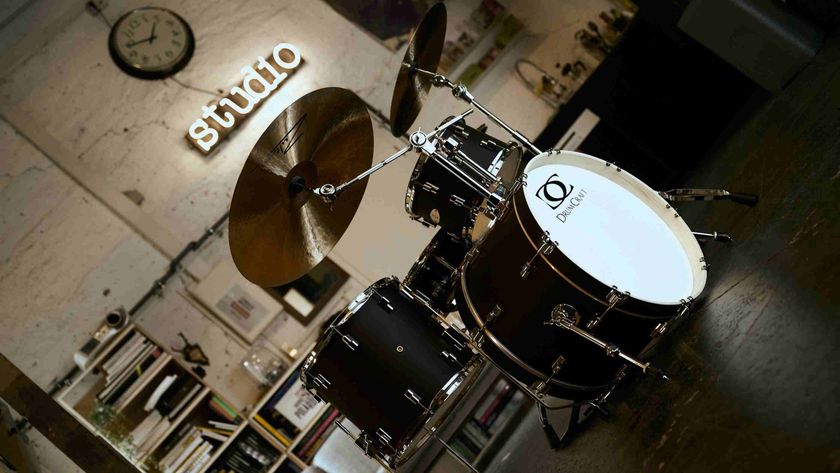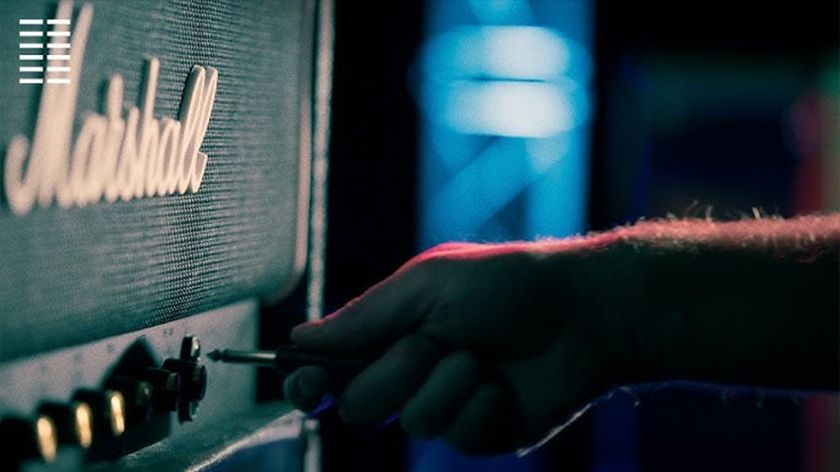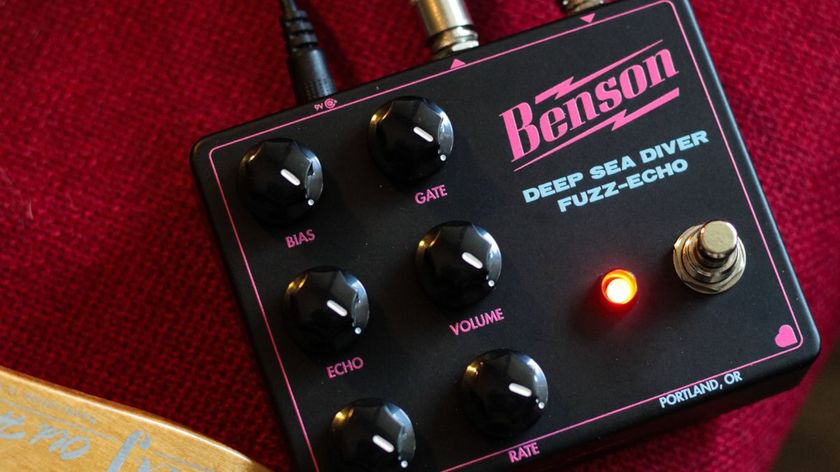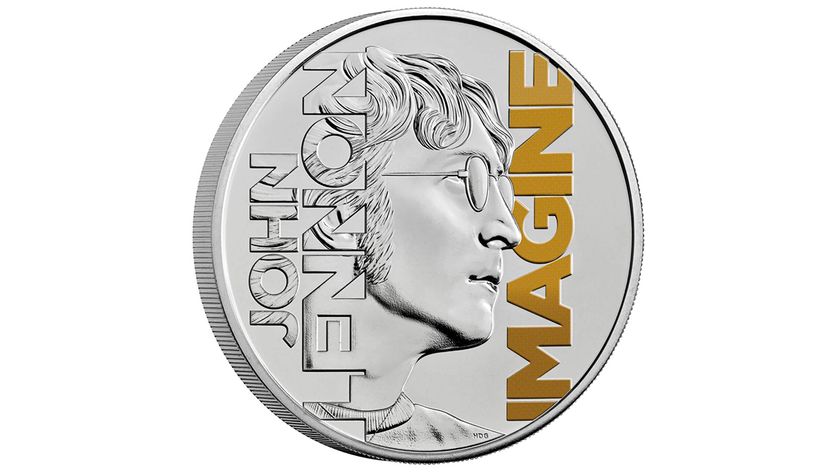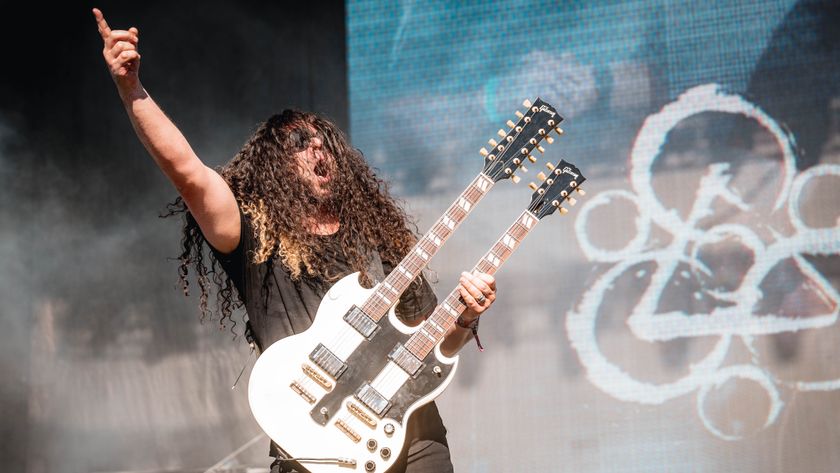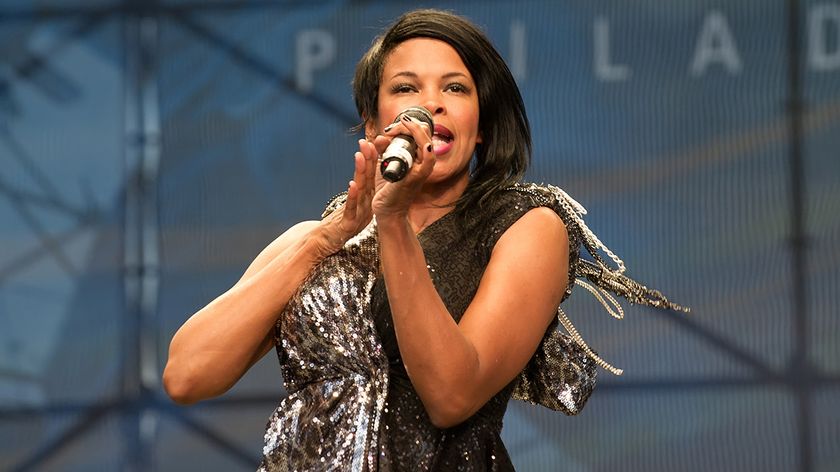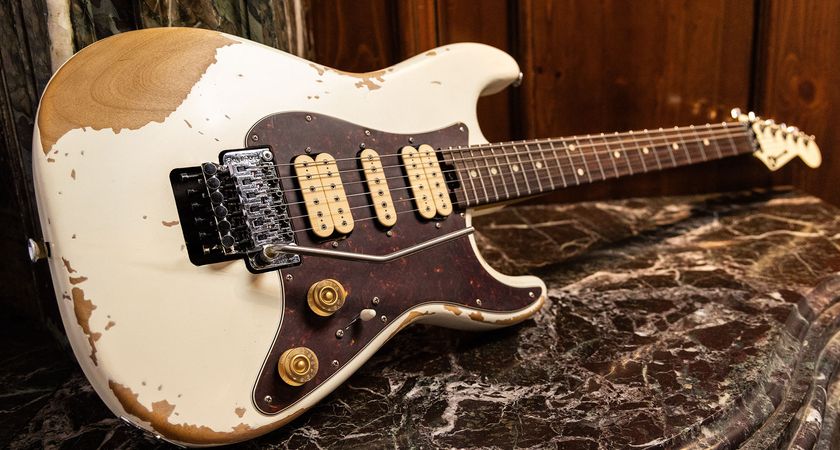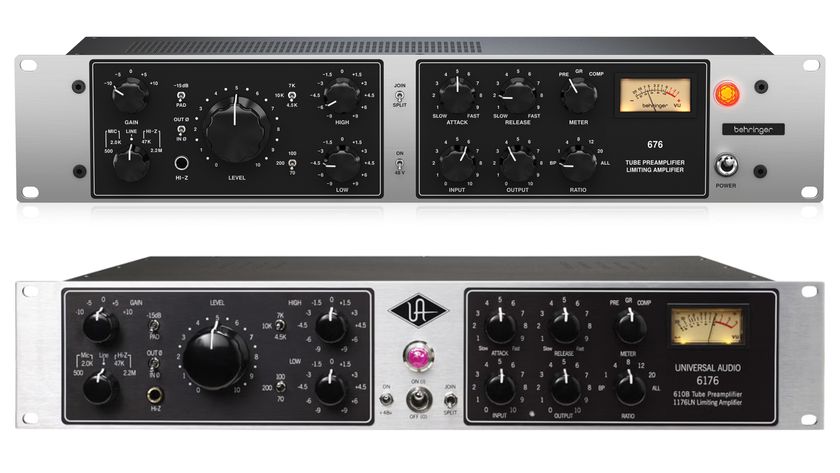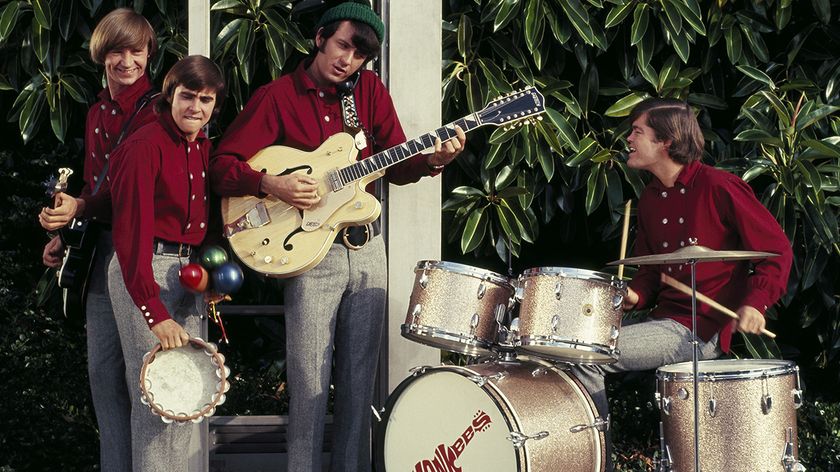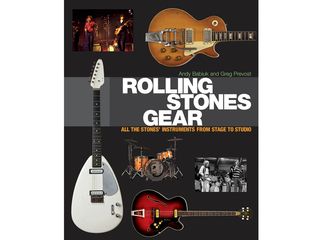
In pictures: Rolling Stones Gear
“In a way, I see this as a time capsule," says noted vintage instrument expert Andy Babiuk of his just-published book, Rolling Stones Gear: All the Stones’ Instruments from Stage to Studio. "Fifty years from now, people will still be listening to The Rolling Stones. Some kid will stumble upon their records in whatever form they’ll be presented on, and that kid will wonder, ‘How did they make this music?’ This book answers that question."
It took over nine years for Babiuk to research and compile Stones Gear (co-written with Greg Prevost), which documents on 672 pages and in hundreds of photos (many of which have never been published before) all of the instruments that The Rolling Stones have used – and, in some cases, still do – during their 50-year plus career.
"Writing this book was a mammoth undertaking but also a labor of love," Babiuk says. "Gathering all of the information was what really took all the time. It’s not like this stuff is available in a library. You have to put all the pieces together yourself. But I had a lot of help from some incredible people, including members of the Stones and people from their organization. I certainly thank them enough for all the access they gave me."
In 2002, Babiuk published Beatles Gear, the definitive word on the instruments used by the Fab Four. According to Babiuk, Stones Gear required a wider canvas: “With The Beatles, there was kind of a 10-year period to cover; they stopped making music in 1969. The Stones are past 50 years now – a lot more time and a lot more instruments. Some people thought that maybe I should just focus on The Stones in the '60s, or maybe into their Mick Taylor period. But they’re still a viable band making music, so to me, you have to look at the whole thing. It's a rich, incredible history.”
Rolling Stones Gear: All the Stones’ Instruments from Stage to Studio is published by Backbeat Books and can be ordered at Barnes & Noble. Also, be sure to check out Andy Babiuk's Fab Gear store as well as his Facebook page.
On the following pages, Babiuk discusses eight prime pieces from Stones Gear.
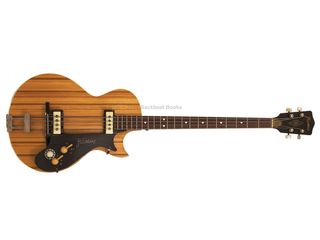
Bill Wyman: Framus 51/50 Star Bass De Luxe (nicknamed the 'Humbug" bass)
“This is the ‘Humbug’ bass from probably around late 1963. Bill was playing another Star Bass before this one – a red sunburst with a larger body. The red one is known as the Star Bass, and this one Bill dubbed the ‘Humbug’ bass because he thought the stripes in the wood made it look like a certain kind of British candy.
“It’s a super-important bass for the simple reason that Bill used it during a center period of the ‘60s when the Stones were recording a lot at RCA Studios in Los Angeles. Some of the Stones’ biggest hits, like Satisfaction, were recorded with it. That woofy, rolling bassline on 19th Nervous Breakdown? That's this bass.
“It’s a rare instrument, too. There are a lot of basses like this one floating around, but very few have the same features. Back in the ‘60s, Framus was a bit of an odd company; they would never follow a format of ‘There’s a pickguard with these knobs on it,’ and so on. It was almost like whatever they had lying around, they’d just slap it together and make it. Bill’s ‘Humbug’ bass had a natural top and back and painted sides, but a lot of those instrumens have black back and sides, or natural sides with natural backs.
“Bill liked both ‘Humbug’ bass and the red Star Bass. He switched around and used a few things during the mid- and late ‘60s. When the Stones were rehearsing for the Hyde Park show where they were going to introduce Mick Taylor, he was using a Fender Mustang bass. At the actual show, however, he went back to the ‘Humbug’ bass. I asked him why, and he said because it was so lightweight.”
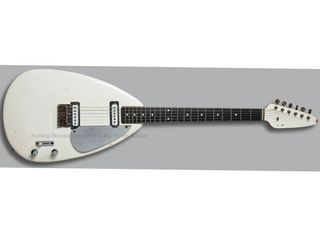
Brian Jones: 1964 Vox MK III "Teardrop"
“One of the coolest-looking guitars ever. This was custom-made for Brian as kind of a one-off. He requested it as a six-string, and at the time all of the six-strings Vox was building had vibrato bars.
If you look closely, the bridge on this guitar is a Fender Strat bridge. They probably could have put in another bridge, but put in Fender parts just so they could get the guitar to him fast in the summer of ’64. The part where the vibrato bar would screw in is cut off. On the back, where the block connects the springs, it’s in there but they had to slice the block down to make it shorter – they did this because the body of the guitar was so thick.
“Brian used it in the studio as well as live. As you can imagine, it’s a difficult guitar to play sitting down, though. During this period, Brian and Keith didn’t share guitars so much. Later on, the guitars became more communal. More than any other guitar, the Vox Teardrop is one that’s associated with Brian Jones. It was an extension of his personality.”
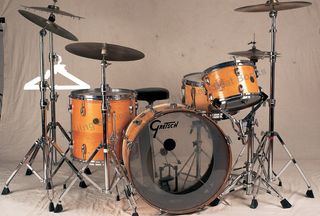
Charlie Watts: 1957 Gretsch "round badge" drum set
“Charlie is very much known as the Gretsch player, but as we point out in the book, he was playing Ludwig throughout the bulk of the ‘60s. He’s said that this was because he saw Ringo with his cool, American-made Ludwig set, so he went off and got his in a different color.
“At the end of the ‘60s, Charlie started to add new pieces; for a time, he would have kits that were both Gretsch and Ludwig. He had a few Gretsch kits throughout most of the ‘70s, but it wasn’t until ’78 that he got the famous ’57 Gretsch round badge kit. He’s been playing it ever since.
“The kit’s been refinished. It actually came from SIR in Los Angeles. Charlie was playing on a Ronnie Wood session, and SIR showed up with this kit. He fell in love with it and persuaded SIR to sell it to him.
“He interchanges a lot of his cymbals. The most important one here is the flat ride. No one seems to know what it is, though. One day, Charlie walked into a music store in France, saw this cymbal, bought it and has used it ever since. He loves cool old stuff. He still uses a Speed King pedal that’s pretty ancient.
“He’s very meticulous – won’t clean his cymbals, won’t change anything once he’s set on it. The wing nuts even have to face a certain direction. The clothes hanger is for Charlie: After soundcheck, he hangs his jacket up and puts out a little sign that says, ‘Open.’ Once he’s done with soundcheck, he flips it back: ‘Closed.’ You gotta love that."
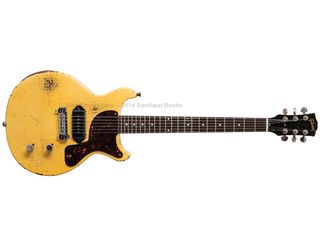
Keith Richards: 1958 Gibson Les Paul TV Junior (nicknamed "Dice")
“Keith got this guitar in 1979, around the time that he was doing the New Barbarians stuff. He likes old guitars, and this one really appealed to him. Whoever had the guitar prior to Keith put a decay of dice on it – quite coincidentally. He's is in the habit of naming his guitars, so this was originally called ‘Tumblin’ Dice,’ and it was then changed to just ‘Dice.’
“The two Gibson knobs have been changed to Tele knobs. There are all kinds of scratches and things on the guitar – Keith plays so hard. The last few frets on the bass side are practically scalloped from his strumming hand coming down with the pick.”
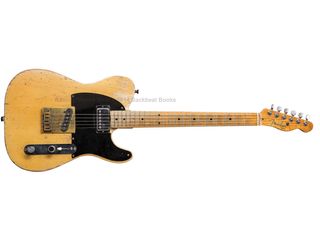
Keith Richards: 1954 Fender Telecaster (nicknamed "Micawber")
“This is probably Keith’s most famous guitar. There’s no reason why he called it ‘Micawber,’ other than he’d rather say, ‘Gimme the Micawber’ than ‘Hey, gimme that Tele over there.’ It's like, 'Which Tele?' – there could be 20 of 'em at any given time.
“Eric Clapton gave the guitar to Keith on his 27th birthday. This was prior to the band going to France for the Exile On Main St recordings – they exiled themselves. Originally, there was a single-coil in the neck. The guitar was stolen from the band in France, but Keith did get it back. At the start of the ’72 tour, the single-coil was still in place, but soon after Keith put in the humbucker.
“To this day, it’s Keith’s number one Tele. There’s a brass bridge on it, and it’s always in five-string tuning, never six-string; in fact, the saddle for the low E is gone. Also, the pickup isn’t the original; it’s a pickup for a Fender lap steel.
"One of the fret markers on the neck is gone – again, from the wear of Keith’s pick. That’s just the way he plays. You can almost measure a direct line on the guitar to where Keith’s hand comes down. To say he plays the shit out of his instruments, particularly this guitar, would not be an overstatement.”
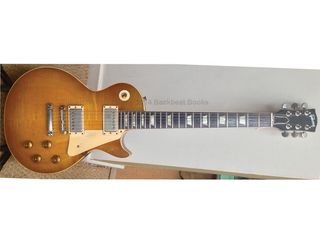
Mick Taylor: 1959 Gibson Les Paul Standard
“I asked Mick about how he got this guitar from Keith. Before he joined the Stones, Mick was in John Mayall’s Bluesbreakers. He had to play a Les Paul to mimic the classic Clapton-era Bluesbreakers sound, the Les Paul through the Marshall. He got a Les Paul during this time, but it was stolen. Finding another Les Paul in London at that point in the ‘60s wasn't so easy.
“Ian Stewart, the Stones’ roadie, told Mick that he could buy a ’59 Les Paul from Keith, and so Mick went to Olympic Studios, where the Stones were recording Satanic Majesties. While the rest of the band was in another room, Mick worked out a price and bought the guitar. He used it during the rest of his time in the Bluesbreakers.
“When Mick joined the Stones, he brought his guitars with him and this was one of them. Keith apparently didn’t know anything about the fact that his guitar had been sold, so he started using it – when you’re in the Stones, a guitar’s a guitar.
“Mick played this Les Paul while he was in the Stones, but you would also see Keith with it; in fact, he played it at Altamont.”
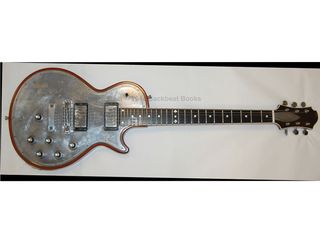
Ron Woods: 1978 Zemaitis "Metal Front" guitar
“Ronnie already had a rapport with Tony Zemaitis when he came to the Stones. He had a bunch of Tony’s guitars built for him when he was still in The Faces. In ’78, when the Stones were getting ready to do a big tour, Ronnie had some guitars custom-built for him, including this one.
“If you look at the guitar closely, there are engravings of teepees with smoke clouds coming out of them, and they say things like ‘Stones Concerts Tonight.’ There’s a lot of little things like that. One of Tony's specialties was doing these really cool engraved tops.
“This guitar has a battery-powered booster in it, so Ronnie could hit a switch and take a lead, and then he’d switch it off when he was done.”
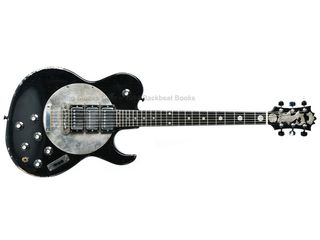
Ron Wood: Zemaitis "Disc Front" guitar (circa 1971)
“They call this the ‘Disc Top,’ and it’s probably Ronnie’s most-famous guitar. It’s hard to say what year it’s from – Tony Zemaitis didn’t date the guitars – but we surmise it’s probably from ’71.
“Ronnie played it on a ton of Stones records, but it was on a lot of Faces recordings, as well. The interesting thing about it is, it looks like a solid-body, but it’s not. It’s a hollow body and it’s chambered, and it’s filled with cotton. The other cool thing is the disc, which is a pirate’s map. The engravings have pirates and maps and things like that. It’s pretty cool.
“Tony always made guitars with set necks. Ronnie had wanted a bolt-on, but Tony built it as a set neck anyway. If you at the back of it, you can see that he put a plate on it like you would with a bolt-on. He put a smiling skull-and-crossbones on the plate – it’s a bit of a joke."

Joe is a freelance journalist who has, over the past few decades, interviewed hundreds of guitarists for Guitar World, Guitar Player, MusicRadar and Classic Rock. He is also a former editor of Guitar World, contributing writer for Guitar Aficionado and VP of A&R for Island Records. He’s an enthusiastic guitarist, but he’s nowhere near the likes of the people he interviews. Surprisingly, his skills are more suited to the drums. If you need a drummer for your Beatles tribute band, look him up.
